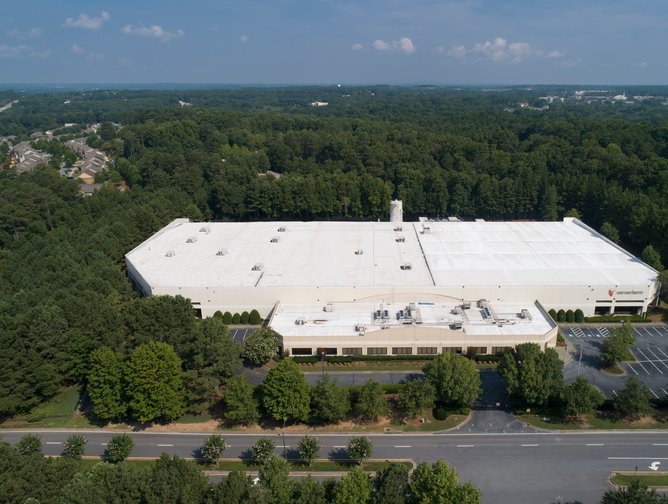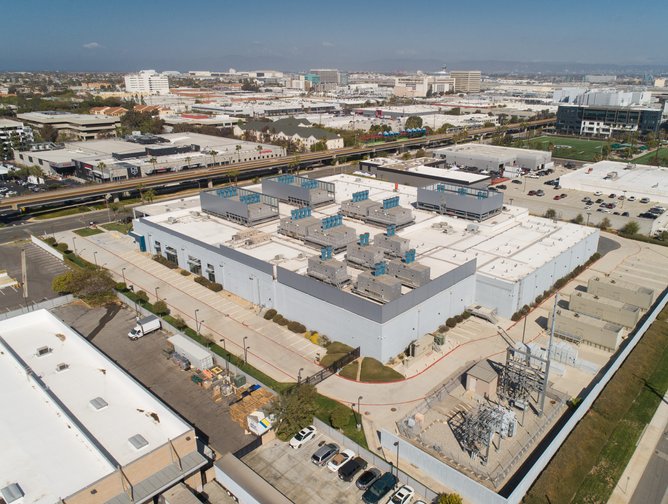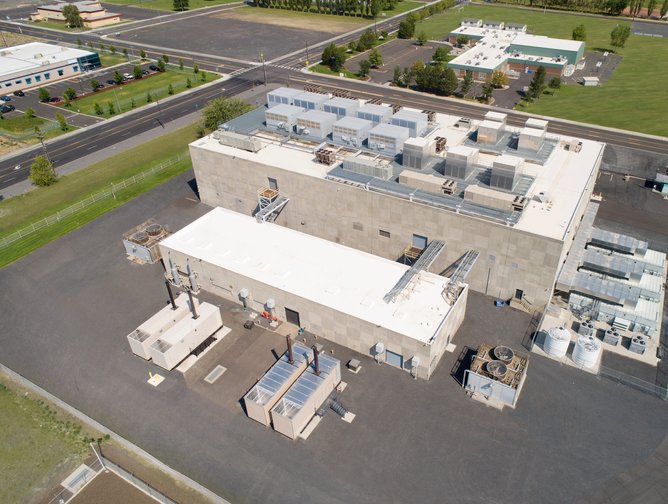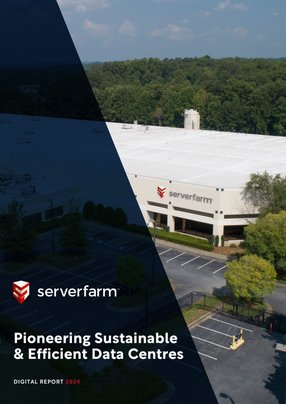Serverfarm: Pioneering Sustainable & Efficient Data Centres
Data centre operators have been called the landlords of the internet, AI and global digital, networked economies. But not all landlords are the same.
Avner Papouchado, CEO of fast growing commercial colocation data centre firm Serverfarm, has always had a unique perspective on the company’s role and its responsibilities to its customers.
“We listen to our customers, and I think our customers rely on us to change with them. A lot of times we try to anticipate what our customers’ needs are before they have a problem,” Papouchado highlights.
Serverfarm has integrated advanced engineering, creativity, sustainability and digital transformation into its mission and culture. The company’s real estate beginnings in the late 1990s laid the foundations for its evolution from US-based single-tenant landlord to a multi-tenant data centre operator and now to global data centre owner, developer and operator.
Serverfarm did not invent sale and leaseback. But what set it apart was (and still is) the combined expertise of its real estate and engineering and operations teams. Its real estate experts create value for both parties. In parallel, its engineering and operations team focuses on capacity expansion opportunities through infrastructure modernisation. For companies who partner with Serverfarm to transition from data centre owner/operator to tenant, this opens up untapped ROI and guarantees growth capacity headroom. When Serverfarm transforms a data centre and brings additional capacity to market, new colo clients gain access to ultra modern facilities. This is unique in the market.
Early on, Serverfarm spotted that single-tenant data centres were inefficient and underutilised – with often as little as 30% of available capacity in use at any time.
By changing existing single tenant buildings to multi-tenant environments, Serverfarm has been able to more than treble capacity utilisation with its 11.4MW London colocation data centre, along with other facilities such as its 18MW Amsterdam and 17.3MW Los Angeles data centres, providing additional capability for customers.
Serverfarm stays at the forefront of trends across the data centre industry through its strategic focus on efficiency, maximum asset utilisation, minimum environmental impact and long term economic and environmental sustainability. All based on the intelligent, data-driven use of its assets.
Over time the team at Serverfarm noticed another inefficiency. Enterprise and service provider teams were building more capacity than they needed, putting pressure on balance sheets and the environment. As a result, Serverfarm has decided to help enterprises adapt by helping with capacity planning, asset and change management.
In 2015, Serverfarm developed InCommand, its award-winning Data Centre Management as a Service (DMaaS) platform. This brought together the three main elements of a data centre: the real estate, the facility environment and the IT environment. This portal-based solution combines people, processes and platform, creating a cloud-like experience for data centre management.
Without smart operation, a full building running at high utilisation is only a short-term gain. By developing InCommand, Serverfarm recognised that providing actionable data on how equipment is being used and operated over years and decades pushes costs down and useful life span up, squeezing out waste in the process.
This cutting-edge solution has been recognised with multiple awards – including winning an SDC Award for Best Cloud Platform and being shortlisted for DCS Awards’ Data Center Intelligent Automation/Management Innovation of the Year – showcasing the solution’s capabilities in optimising and streamlining data centre operations.
As Serverfarm CEO Avner Papouchado says, the business has scaled dramatically from a family company with limited resources, to a company that today holds a key role in the data centre industry.
“We understand the agility that our customers need, and we continually try to make our customers’ lives as easy as possible,” he says.
This mission is reflected in the way Serverfarm acts as a true partner to customers. Not content with building data centres based on a set design, its solutions match customer needs and strategic objectives.
“We understand users want compute, and they don't want the building itself. Ultimately, we try to make the whole experience easier for our customers, so we are never the problem.”
Smart investment central to Serverfarm’s long-term strategy
In the early years of the data centre industry, some believed that abundant resources in terms of land and energy would always be available, and planned, built and operated accordingly. Serverfarm recognised early on that the smart investment, use and management of finite resources was the only sustainable long-term strategy.
Demand on data centres is ever-increasing. Where customers would seek to grow power in 1-3MW chunks, today demands for 8-10MWs of additional power are common. AI and High Performance Computing workloads require even more power, delivered faster. The data centre industry must think in new and innovative ways. Serverfarm is leading this change.
Sustainability is at the heart of Serverfarm’s mission, particularly as it continues to expand globally. Its data centre development strategy is based on building new facilities where needed, and modernising, retrofitting and expanding existing facilities where possible.
This approach helps Serverfarm offer its clients the most sustainable and efficient data centre capacity available. With buildings and construction directly representing around 42% of all annual global CO2 emissions, reducing the carbon produced by developing new buildings is an essential component to mitigating the global climate crisis.
Repurposing and modernising existing buildings has proven carbon benefits. Analysis of Serverfarm’s Chicago data centre, which the company purchased in 2010, has proved that sustainable expansion through retrofitting can result in a modelled 88% embodied carbon emission reduction.
“Today, half of our deals are adapt and reuse,” Papouchado explains. “We are still finding a lot of properties we can reuse economically and efficiently, and as a result, there are a lot of buildings that are not going to landfill.”
Sam Brown is Serverfarm’s Chief Development Officer. He says: “Customers require capacity fast. When we view a property, we are evaluating how much more capacity can be delivered through existing power infrastructure, where that infrastructure can be upgraded to provide additional capacity, how much more IT can be hosted and importantly, how quickly can modernisation and expansion be achieved. This is not just on newly acquired properties. We constantly look to expand our facilities through additions, efficiencies and improved utilisation in response to customer demand for more capacity.”
Agility is key to meeting customers’ demands as Papouchado describes, the data centre industry as a whole must evolve by embracing the sustainability challenge.
A forward looking approach to sustainability is further evidenced with Serverfarm’s water usage. Data centre cooling operations have used water for decades. In traditional evaporative cooling and other high-water use systems, a 40MW data centre could use 500 million gallons of water each year. With climate change associated droughts across the world leading to restrictions on water use, data centre operators must look to alternative solutions.
“Cooling is becoming more efficient, and this efficiency is only going to increase as we transition from air cooling to direct-to-chip and different types of water cooling,” Papouchado says.
With Serverfarm highly aware of water use within the data centre, Papouchado explains that the business minimises water use. Serverfarm engineers work constantly to reduce water usage wherever possible, for example, by utilising efficient closed-loop systems.
“All of our data centres are now adaptable to liquid cooling. Just like we have gone from 1kW racks to 60kW, we are moving from air cooling to technologies such as direct water cooling or direct to the server cooling.”
“I’m proud to say that we don't have a data centre in Phoenix, where a number of operators are using evaporative cooling in a place that's dying of thirst.”
Jim Shanahan, Serverfarm COO, has responsibility for data centre operations. He says: “Today AI, cloud and web scale means clients think in 10s or 100s of megawatts of power for data centre buildings and campuses. Combining this with the step changes in rack power densities that are currently approaching 40kW per rack and will soon reach 80kW and beyond and one can see a new era of design and management. But this also brings opportunities. For example, GPU server operating temperatures could rise by 10 degrees. With the introduction of liquid cooling technology, the excess high-grade heat generated could be put to use beyond the data centre. Inside the facility, the PUE number could be reduced by 10-15% - which at the scale being operated means vast savings. At Serverfarm, we specialise in doing more with less. That means typically delivering 20% more computation for the same amount of power and space.”
Serverfarm is also innovating when it comes to its relationships with power utilities. This spans exploration of on-site generation, integration of Renewable Energy Resources to the use of new energy storage and provision through fuel cells.
Through wider adoption of such technologies, Papouchado explains the wider data centre industry can help the world transition from fossil-based power to renewable energy.
“We are very much concentrated on delivering power to the data centre, giving the grid time to grow to our data centres, and being good consumers of power,” he adds.
“If you buy gold one day, it's still gold 100 years from now. But if you buy a data centre today, it's run by fossil fuels, it has diesel generators, and it has air cooling. In 20 years, the data centre will be completely different. It will probably have gas generators, it's going to run on different power sources such as wind, solar and nuclear, and whatever else comes along.”
This highlights the change in pace and trends, and the need for data centre operators to stay agile. This is illustrated by Serverfarm’s approach to ramping capacity.
Customer journey requirements can change quickly. Where customers may start by taking down chunks of data centre capacity of 1MW or 3MW, this can ramp quickly to a need for 5MW, 8MW or more. In the era of AI, such ramping is expected to accelerate.
“Three years ago, everybody wanted a data centre ramp,” explains Papouchado. “Right now, very few providers are being flexible when providing ramps”.
“Our focus on customers means that we still provide ramps in a smart way,” he adds. “We are being as agile as possible to meet customers’ demands when it comes to both availability and sustainability, which in my mind go hand in hand.”
Environmental responsibility and energy efficiency in operations
In an era where sustainability is increasingly important, Serverfarm takes the issue of environmental responsibility and energy efficiency in its operations very seriously.
To the public it is often Hyperscaler activities at the grid scale, such as Power Purchase Agreements, which get a lot of attention. PPAs are welcome as ways to encourage more investment in renewable energy generation, but have little direct impact on making data centre operations more sustainable in the short term. Also, at the grid level Renewable Energy Certificates (RECs) are proven guarantees of origin of the power sources being used by data centres. As transition of the energy sector eventually leads to greener grids and carbon free power generation, such purchasing arrangements and RECs are welcome across the sector.
But Papouchado also identifies how data centre operators can be drivers of sustainability today. Serverfarm is fully aligned with the hyperscalers' well-publicised commitments to sustainability (such as becoming carbon negative, and 100% renewable energy driven) and knows that requires lease partners in the commercial colocation space to provide practical engineering solutions.
Papouchado believes that every effort must continue to be made to reduce carbon and to use power more effectively to meet surging demand with the lowest possible environmental impact. It is inside data centres operated by Serverfarm where smart engineering is driving down carbon emissions and driving up energy efficiency. PUE, or Power Usage Effectiveness, is the best known metric in the industry (among others such as Water Usage Effectiveness (WUE) and Carbon Usage Effectiveness (CUE).Today’s modern facilities are operating at a PUE 1.2, and, in some cases, even lower.
“It used to be that everybody had Office suites and apps in their closet, running a PUE of 3.0. Now, Microsoft, for example, has moved Office to Azure, running at a PUE 1.2, and that's an example of a huge driver of sustainability to the world.”
Serverfarm works closely with cloud providers on the hard work of continually finding practical ways to ensure its data centres run at (or better than) operating efficiency levels expected by the hyperscalers across every metric.
As Papouchado concludes, the data centre industry should be seen as a positive when it comes to sustainability. “It's actually good that the data centre industry uses electricity wisely and responsibly,” he says. “We can buy bulk sustainable energy and make it affordable. Data centres are really good for the world and, together as an industry, we have to advertise that.”
Make sure you check out the latest edition of DataCentre Magazine and also sign up to our global conference series - Tech & AI LIVE 2024
**************
DataCentre Magazine is a BizClik brand





